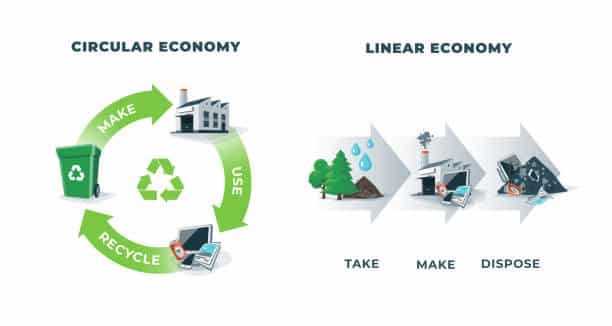Did you know – 90 billion tonnes of primary materials are extracted and used globally BUT only 9 percent are recycled? Aside from the fact that this LINEAR model is unsustainable, the nature of this linear ‘make-take-dispose’ model also has significant damaging impacts on the environment, human wellbeing and, we believe, viability of businesses over time.
CIRCULAR ECONOMY has been identified as a major change opportunity that could support the development of new industries and jobs, reduction of greenhouse gas emissions and increase in efficiency of natural resources consumption (e.g. energy, water, and other primary materials).
Now, what is the circular economy? The circular economy is a system designed to extract the maximum value from raw materials and turn them into products and services, which can be recycled again back into the supply chain. It is a system that aims to reduce our reliance on finite resources, reduce our impact on the environment, and build a more sustainable economy for the future.
1. A positive impact on our environment.
2. Improved security of the supply of raw materials.
3. It has the potential to decrease the greenhouse gas emissions and negative effects brought by the linear ‘make-take-dispose’ model. This will also drive innovation, boost economic growth development and naturally create more jobs.
4. End-users will be provided with more sustainable and innovative products.

